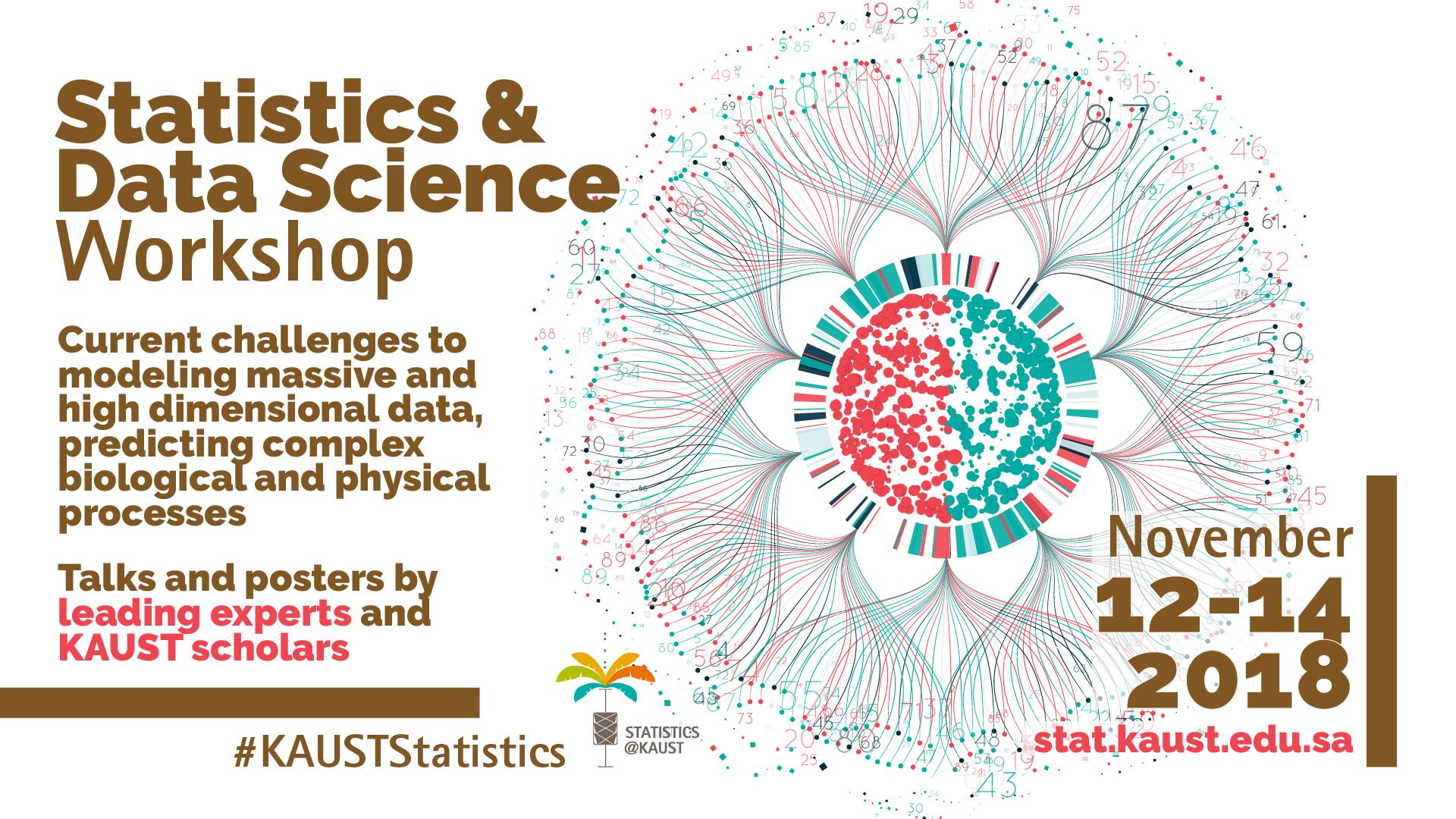The Statistics Program at KAUST is proud to host the 2018 Workshop on Statistics and Data Science. This workshop gathers the leading experts on statistical data science to discuss the current needs, challenges and opportunities of modeling massive and high dimensional data, predicting complex biological and physical processes.
The workshop will run from November 12-14. Talks and posters presentations will take place in Auditorium 0215 (between Buildings 4 & 5).
View Workshop's Agenda.
Related Persons
Professor,
Statistics

